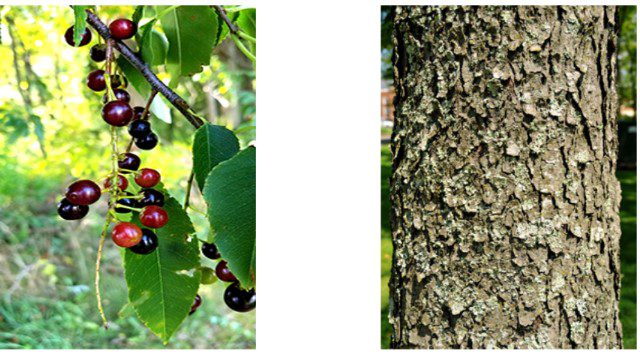Prunus serotina
Mature Size:60 to 100 feet in height, and 1 to 4 feet in diameter
The Black Cherry trees located here were uncovered after the Chinese Privet was removed along the perimeter of the Sweet Gum tree. This tree grows on many sites that are not very wet or dry. Leaves are alternate, simple 2 to 5 inches long, oblong to lance shaped. The bark is dark brown to black, covered with small scaly patches –“resembling burnt potato chips.” The Black Cherry tree is the largest of the native cherries in the United States and the only one of commercial value. The fruit is an important food source for many birds and wildlife.
Fun Facts: The Cherry Tree, along with the Red Maple and Dogwood trees located on the walk, are all considered Keystone species. According to Doug Tallamy, a noted entomologist at the University of Delaware, “keystone plants/trees support 90% of the butterfly, moth and native bee species.” In addition, birds and other wildlife depend upon these insects as part of the food web.

For more information:
http://dendro.cnre.vt.edu/dendrology/syllabus/factsheet.cfm?ID=66

